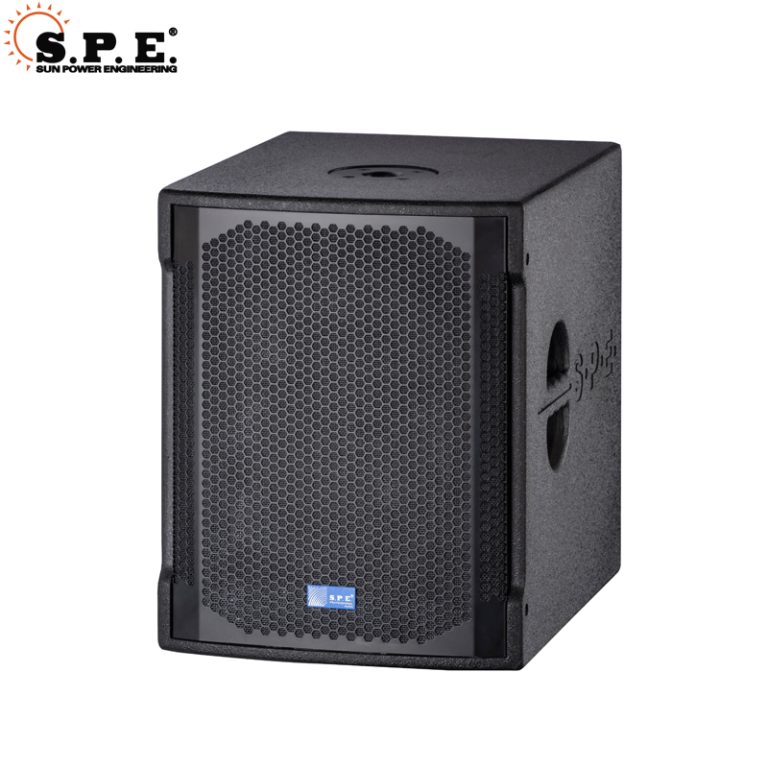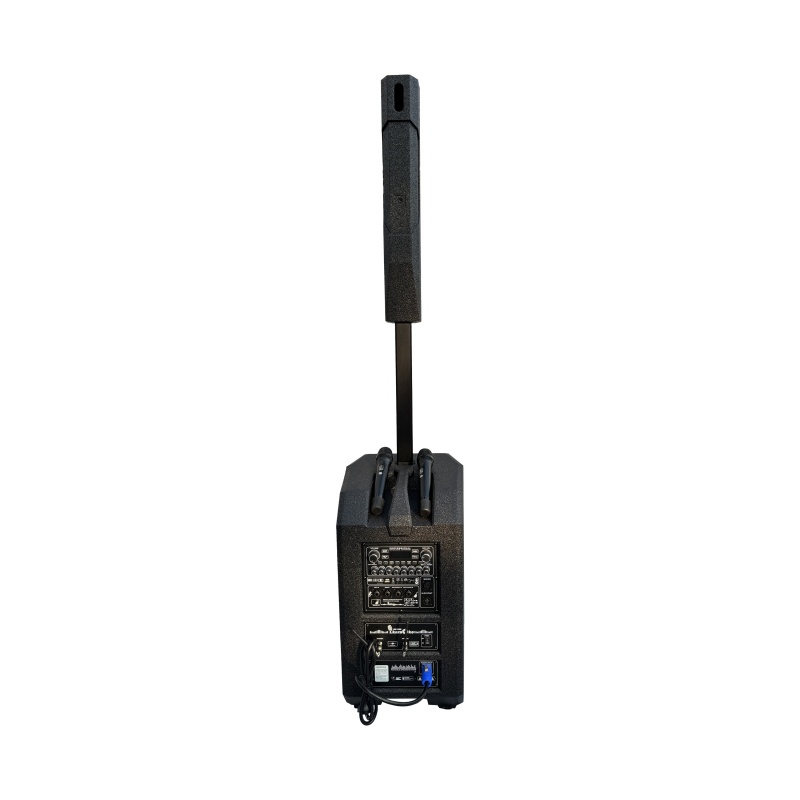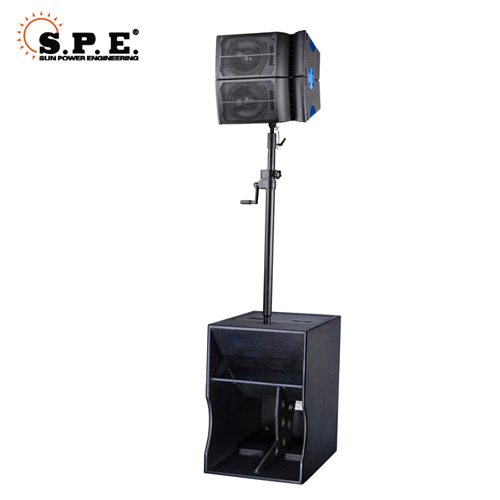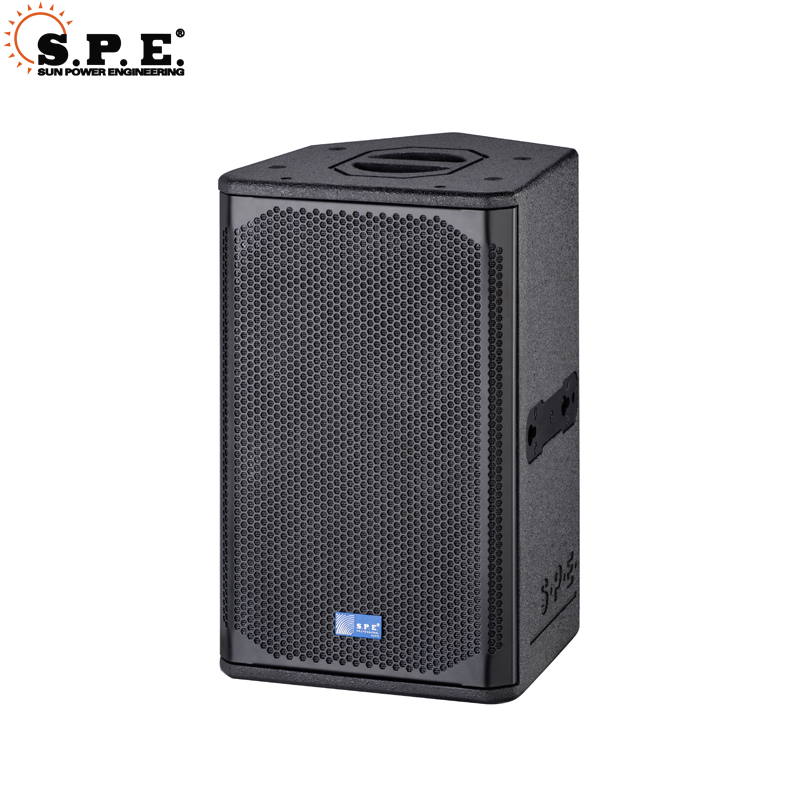🎵 Attention, DJs and audio enthusiasts! 🎵 Are you ready to take your sound system to the next level? Imagine unleashing an earth-shaking 2000W RMS of pure audio power through a perfectly designed 18″ sound box. This isn’t just about volume; it’s about creating an immersive sonic experience that will leave your audience in awe.
But here’s the challenge: integrating such a high-power amplifier into an 18″ sound box isn’t child’s play. It requires precision engineering, careful consideration of heat management, and a deep understanding of acoustic principles. Many have tried and failed, resulting in subpar performance, equipment damage, or even safety hazards. 💥
Fear not! In this comprehensive guide, we’ll walk you through the intricate process of designing a high-power 18″ sound box with a 2000W RMS amplifier integration. From essential design principles to performance optimization for professional DJ use, we’ll cover everything you need to know. Get ready to dive into the world of cutting-edge audio technology and learn how to create a sound system that will set you apart in the competitive DJ industry. 🚀
18 Sound Box Design Essentials
A. Optimal speaker configuration
When designing an 18 sound box, the speaker configuration is crucial for achieving optimal performance. A typical configuration includes:
- One or two 18-inch subwoofers
- Multiple mid-range drivers (6-8 inch)
- High-frequency tweeters or compression drivers
Here’s a comparison of different configurations:
| Configuration | Bass Response | Mid-range Clarity | High-frequency Coverage |
|---|---|---|---|
| Single 18″ sub | Good | Limited | Limited |
| Dual 18″ subs | Excellent | Moderate | Moderate |
| 18″ + mid-range + tweeters | Very good | Excellent | Excellent |
B. Enclosure materials and construction
The choice of materials and construction techniques significantly impacts the 18 sound box’s performance:
- MDF (Medium-Density Fiberboard): Dense, resonance-resistant
- Plywood: Lightweight, strong, and flexible
- Composite materials: Advanced options for weight reduction
Bracing and reinforcement are essential to minimize vibrations and enhance sound quality.
C. Acoustic principles for maximum sound quality
To achieve maximum sound quality in an 18 sound box design:
- Implement proper crossover design
- Use acoustic treatments (e.g., damping materials)
- Optimize port design for efficient bass reflex
- Consider horn-loading for increased efficiency
D. Ventilation and heat management
Proper ventilation and heat management are crucial for maintaining performance and longevity:
- Incorporate strategically placed vents
- Use heat-resistant materials around amplifier components
- Implement active cooling systems (e.g., fans) for high-power applications
- Design airflow paths to efficiently dissipate heat
Now that we’ve covered the essentials of 18 sound box design, let’s explore how to integrate a 2000W RMS amplifier into this powerful system.
Integrating a 2000W RMS Amplifier
Choosing the right amplifier model
When integrating a 2000W RMS amplifier into an 18 sound box design, selecting the appropriate model is crucial. Consider factors such as power output, efficiency, and compatibility with your specific speaker configuration. Look for amplifiers from reputable brands known for their quality and reliability in professional audio applications.
| Amplifier Feature | Importance |
|---|---|
| Power Output | High |
| Efficiency | Medium |
| Compatibility | High |
| Brand Reputation | Medium |
Matching amplifier specs with speaker requirements
Ensure that the amplifier’s specifications align perfectly with your 18 sound box’s requirements. Key factors to consider include:
- Impedance matching
- Power handling capacity
- Frequency response range
- Sensitivity ratings
Proper wiring and connections
Proper wiring is essential for optimal performance and safety. Follow these guidelines:
- Use high-quality, thick gauge speaker cables
- Implement proper cable management techniques
- Ensure secure connections at all points
- Consider using professional-grade connectors like Speakon
Implementing safety features and protections
To safeguard your 18 sound box and amplifier, incorporate essential safety features:
- Thermal protection circuits
- Short circuit protection
- Clip limiters
- Soft start mechanisms
These features will help prevent damage to your equipment and ensure longevity. With the amplifier successfully integrated, we can now focus on optimizing the overall performance for DJ use.
Optimizing Performance for DJ Use
Frequency response tailoring
When optimizing an 18 sound box for DJ use, tailoring the frequency response is crucial. DJs require a balanced sound across all frequencies, with emphasis on low-end punch and crisp highs. To achieve this, consider the following:
- Low-end boost: Enhance frequencies between 40-100 Hz for powerful bass
- Mid-range clarity: Slightly scoop frequencies around 200-500 Hz to reduce muddiness
- High-end sparkle: Boost frequencies above 10 kHz for crystal-clear highs
| Frequency Range | Adjustment | Purpose |
|---|---|---|
| 40-100 Hz | +3 to +6 dB | Enhanced bass impact |
| 200-500 Hz | -2 to -4 dB | Reduced muddiness |
| 10 kHz+ | +2 to +4 dB | Improved clarity |
Crossover setup for multi-speaker systems
Proper crossover setup ensures seamless integration between different speaker components:
- Low-pass filter for subwoofers: Set around 80-120 Hz
- High-pass filter for mid-range drivers: Match with subwoofer cutoff
- Tweeter crossover: Typically set between 2-5 kHz
Equalizer integration for sound shaping
Incorporating a parametric equalizer allows DJs to fine-tune their sound:
- Low-shelf filter: Adjust overall bass response
- High-shelf filter: Control treble presence
- Multiple mid-range bands: Shape the sound’s character
Incorporating DJ-specific inputs and controls
To meet the unique needs of DJs, include:
- Multiple input options (XLR, RCA, 1/4″ TRS)
- Gain control for each input
- Master volume control
- LED indicators for signal level and clipping
These optimizations ensure that the 18 sound box design meets the demanding requirements of professional DJs, providing powerful, clear, and customizable audio output. Next, we’ll explore the crucial aspects of durability and portability in sound system design.
Durability and Portability Considerations
Reinforced construction for frequent transport
When designing an 18 sound box for DJ suppliers, durability is paramount. The reinforced construction ensures the box can withstand the rigors of frequent transport and setup. Key features include:
- Heavy-duty corner protectors
- Shock-absorbing rubber feet
- Recessed handles for protection during transit
- Steel grille for speaker protection
| Component | Material | Purpose |
|---|---|---|
| Cabinet | 18mm birch plywood | Strength and resonance control |
| Corners | Steel reinforcement | Impact resistance |
| Handles | Recessed steel | Ease of transport, protection |
| Grille | Powder-coated steel | Speaker protection |
Weather-resistant features for outdoor events
Outdoor events pose unique challenges for sound equipment. Weather-resistant features are crucial:
- Water-resistant speaker cones
- Sealed input panels
- UV-resistant exterior coating
- Drainage holes to prevent water accumulation
Ergonomic design for easy handling
Considering the weight of a high-power 18 sound box, ergonomic design is essential:
- Multiple grab points for balanced lifting
- Wheels for rolling transport
- Angled sides for easy tilting and maneuvering
- Lightweight yet durable materials where possible
Stackable options for scalable setups
Versatility is key in professional DJ setups. Stackable design allows for:
- Interlocking mechanisms for secure stacking
- Flat top and bottom surfaces for stability
- Built-in alignment guides for quick setup
- Modular connections for daisy-chaining multiple units
These durability and portability considerations ensure that the 18 sound box design meets the demanding needs of DJ suppliers, providing a robust and flexible solution for various event scenarios. Next, we’ll explore how these design elements contribute to overall sound quality enhancements.
Sound Quality Enhancements
Minimizing distortion at high volumes
When it comes to high-power sound systems, minimizing distortion at high volumes is crucial for maintaining sound quality. Here are some key techniques used in 18 sound box design to achieve this:
- Overbuilt voice coils
- Advanced cooling systems
- Proper enclosure design
- High-quality crossover components
| Technique | Benefits |
|---|---|
| Overbuilt voice coils | Increased power handling, reduced heat buildup |
| Advanced cooling systems | Better heat dissipation, longer speaker life |
| Proper enclosure design | Optimized air movement, reduced distortion |
| High-quality crossover components | Improved signal integrity, cleaner sound |
Implementing advanced DSP technology
Digital Signal Processing (DSP) plays a vital role in enhancing sound quality. Modern 18 sound box designs incorporate sophisticated DSP algorithms to:
- Optimize frequency response
- Implement dynamic range compression
- Apply precise equalization
- Manage speaker protection
Fine-tuning bass response for impact
Achieving powerful, tight bass is essential for DJ applications. To fine-tune bass response:
- Use precise port tuning
- Implement bass reflex designs
- Utilize high-excursion woofers
- Apply DSP-based bass enhancement
Achieving clarity in mid and high frequencies
Clear mids and highs are crucial for overall sound quality. Techniques include:
- Employing high-quality compression drivers
- Optimizing horn designs for wide dispersion
- Implementing phase alignment between drivers
- Using advanced crossover networks
By focusing on these sound quality enhancements, 18 sound box designs can deliver exceptional performance for professional DJ applications. Next, we’ll explore how these systems meet specific requirements for professional DJs.
Meeting Professional DJ Requirements
Compatibility with industry-standard equipment
When designing an 18 sound box for professional DJs, compatibility with industry-standard equipment is crucial. Most DJ setups include turntables, mixers, and controllers from well-known brands. Ensure your sound box includes:
- XLR inputs for professional-grade mixers
- RCA inputs for consumer-level equipment
- Speakon connectors for high-power amplifiers
| Connection Type | Purpose | Industry Standard |
|---|---|---|
| XLR | Balanced audio | Yes |
| RCA | Unbalanced audio | Yes |
| Speakon | High-power speaker | Yes |
Incorporating multiple input options
Versatility is key in professional DJ setups. Your 18 sound box should offer:
- Bluetooth connectivity for wireless streaming
- USB input for direct connection to laptops or digital audio players
- 3.5mm auxiliary input for quick connection of mobile devices
Providing reliable performance for extended use
DJs often perform for hours on end, so your sound box must be built to last:
- Use high-quality components rated for continuous operation
- Implement effective cooling systems to prevent overheating
- Include thermal protection circuits to safeguard against damage
Ensuring quick setup and teardown capabilities
Time is money in the DJ world. Design your 18 sound box with:
- Ergonomic handles for easy lifting and positioning
- Stackable design for efficient transport and storage
- Built-in wheels for larger models to facilitate movement
By addressing these professional DJ requirements, your 18 sound box design will stand out in the competitive market of high-power audio equipment.
The integration of a 2000W RMS amplifier into an 18 Sound Box design marks a significant leap forward for DJ suppliers. This powerful combination offers unparalleled performance, meeting the demanding requirements of professional DJs. By optimizing the system for DJ use, manufacturers can deliver exceptional sound quality, enhanced durability, and improved portability.
To truly excel in the competitive world of DJ equipment, suppliers must focus on creating products that not only meet but exceed professional standards. By carefully considering every aspect of the design, from amplifier integration to sound quality enhancements, suppliers can produce high-power sound systems that stand out in the market. Ultimately, investing in cutting-edge technology and thoughtful design will result in products that DJs can rely on to deliver unforgettable performances night after night.






